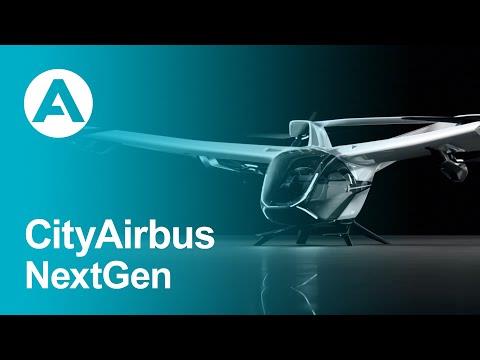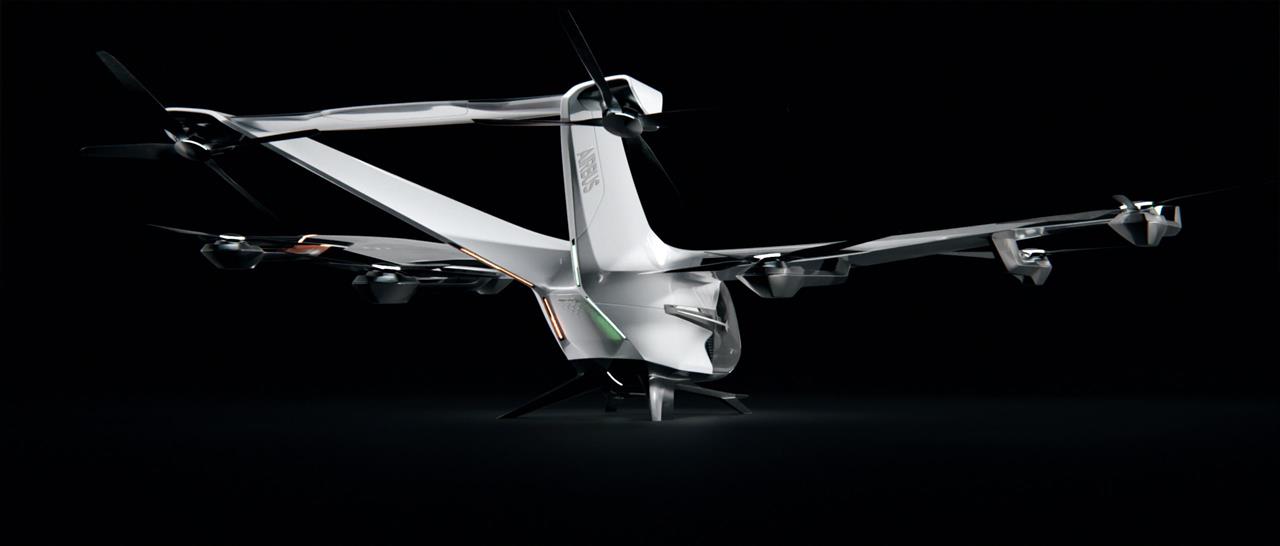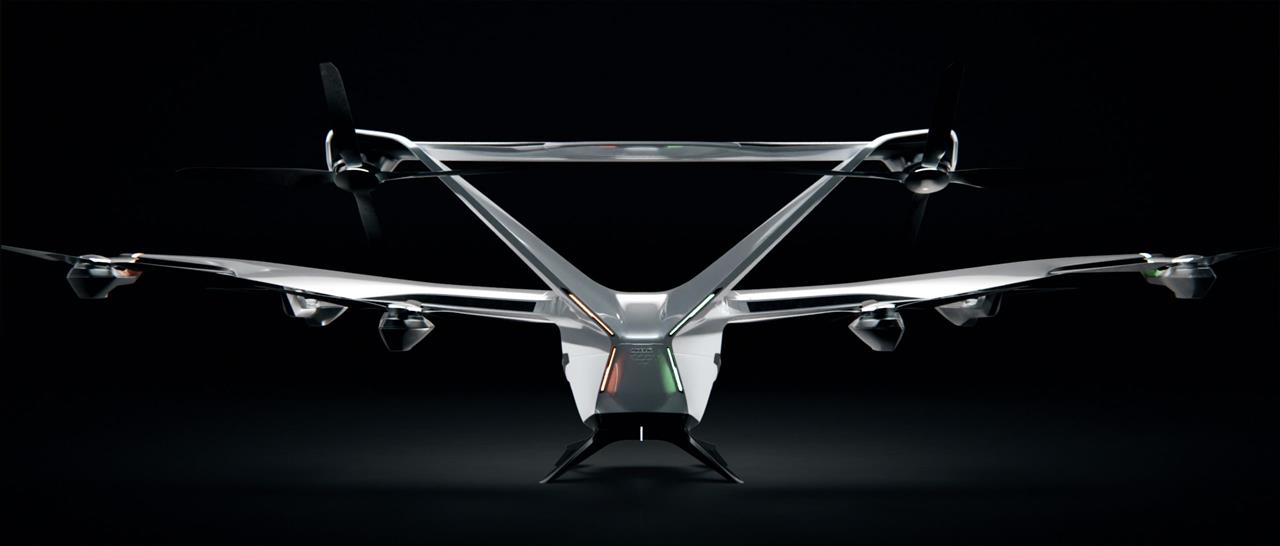(MENAFN- Asia Times) Airbus, the French aerospace giant that has revolutionized air travel around the world, is boldly stepping into the new century with an advanced, next-generation, eVTOL design.
It's all too easy to turn a jaundiced view toward any new announcement that touts big progress in eVTOL (electric vertical takeoff and landing) development. But when aerospace titan Airbus speaks, it's hard to turn a deaf ear.
This week at Airbus's sustainability summit in Toulouse, France, the manufacturer unveiled a design for a fixed-wing CityAirbus NextGen eVTOL with a V-shaped tail and eight sets of electric motors and propellers, AINonline reported.
An engineering team led by Airbus Helicopters is working on the detailed design for the model, with the aim of achieving a first flight with a prototype in 2023, en route to type certification in 2025.
Their potential is compelling: Air taxis could substantially cut down the travel time in heavily congested areas, turning a 45-minute trip from downtown Manhattan to JFK International Airport into just five.
Developing countries are particularly interested in the technology, given their megacities have often grown faster than the infrastructure can support.
The full electric aircraft will carry up to four passengers on flights of up to 80 km (50 miles) and at speeds of 120 km/h (75 mph).
“We have spent hundreds of thousands of engineering hours on this; on all aspects of eVTOL design,” Airbus UAM (Unmanned Air Mobility) head Joerg Mueller said, noting that Airbus has performed extensive computer modelling, conducted multiple wind tunnel tests with full-scale propellers, and set up test benches for noise research.

YouTube
“We have even overflown an urban area, have measured the propagation of sound in this city and the effect it has on people on the ground . . . to see in which sense we need to optimize such a vehicle,” Mueller added.
Mueller said the lift-plus-cruise design of CityAirbus NextGen has“no movable surfaces and no tilting parts,” which makes it“simple and efficient, still while providing a significant forward flight performance.”
The aircraft will initially be piloted, but Airbus expects to move toward autonomous flight as the technology and operational framework for self-flying aircraft are established.
“We have learned a lot from the test campaigns with our two demonstrators, CityAirbus and Vahana,” said Airbus Helicopters CEO Bruno Even.
“The CityAirbus NextGen combines the best from both worlds with the new architecture striking the right balance between hover and forward flight.
“We are on a quest to co-create an entirely new market that sustainably integrates urban air mobility into the cities while addressing environmental and social concerns.”
He acknowledged that the real challenges are wide, spanning urban integration, public acceptance, and automated air traffic management, as well as vehicle technology and business models.
“We build on all of the capabilities to deliver a safe, sustainable, and fully integrated service to society,” Even noted.
Because of the urban mission, low noise levels are essential.
CityAirbus's design calls for sound levels below 65 dB(A) during flyover and below 70 dB(A) during landing.

CityAirbus is being developed to fly with a 80 km range and to reach a cruise speed of 120 km/h, making it perfectly suited for operations in major cities for a variety of missions. Credit: Airbus.
The design is also optimized for efficiency in hover and cruise flight, without having any moving surfaces or tilting parts to handle this transition.
Airbus Helicopters' head of development Tomasz Krysinski said his company had a key advantage over other rivals.
“We are the only company in the world that tested such a vehicle in real size,” he said, explaining that with all rotary-wing aircrafts, the complexity of the task grows with the dimensions of the vehicle.
“It's very easy to do something with a mock-up on the small scale.”
Airbus intends to certify the CityAirbus NextGen under EASA's Special Conditions-VTOL rules. Germany-based start-ups Lilium and Volocopter are seeking type certification on the same basis and hope to achieve this by 2024.
“The CityAirbus NextGen combines the best from both worlds with the new architecture, striking the right balance between hover and forward flight,” Even said.
First test flights for the CityAirbus NextGen prototype will take place in Paris and Munich, though Airbus executives insisted the test program will move beyond its two home markets of France and Germany.
And it's not only city slickers in large metropolises that are expected to benefit from the program. Airbus noted that it hopes to help the likes of emergency service providers access hard-to-reach areas with the aircraft.
Airlines around the world will undoubtedly be keeping a close eye on the project.
For instance, Azul recently shared that it wants to operate 220 eVTOLs around Brazil.
Overall, Airbus wants to“make the dream of personal flight a reality.”

Ushering in the next generation of CityAirbus, the fully electric vehicle is equipped with fixed wings, a V-shaped tail, and eight electrically powered propellers as part of its uniquely designed distributed propulsion system. It is designed to carry up to four passengers in a zero emissions flight in multiple applications. Credit: Airbus.
Additionally, the aviation industry has committed itself to achieving net-zero emissions by 2050. With these two ambitions in mind, the CityAirbus NextGen could provide the perfect balance for Airbus in the UAM scene.
Even estimated annual demand could be around about 1,000 eVTOLs, with the company ruling out any plans to move beyond the sale of eVTOLs into operating fleets itself.
Much like a robotaxi, the goal is for the eVTOL in the future to maneuver itself by computer in order to make the economics more viable. Human operators take up space that could otherwise be used to transport paying customers.
“We are targeting self-piloted autonomous flight,” Mueller said.
“This will progressively come, and we'll introduce it step-by-step, so that at a certain point these vehicles fly fully autonomously. Until then, we'll fly them with a pilot, of course.”
Sources: AINonline.com, eVTOL.com, SimpleFlying.com, Fortune.com, AVweb.com
MENAFN22092021000159011032ID1102847262
Legal Disclaimer:
MENAFN provides the information “as is” without warranty of any kind. We do not accept any responsibility or liability for the accuracy, content, images, videos, licenses, completeness, legality, or reliability of the information contained in this article. If you have any complaints or copyright issues related to this article, kindly contact the provider above.